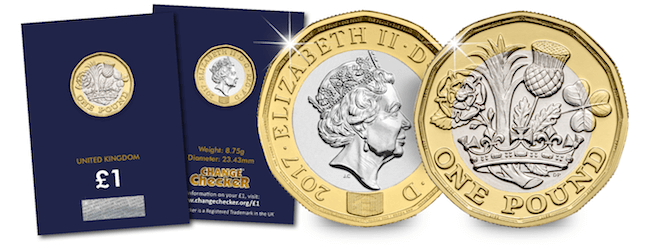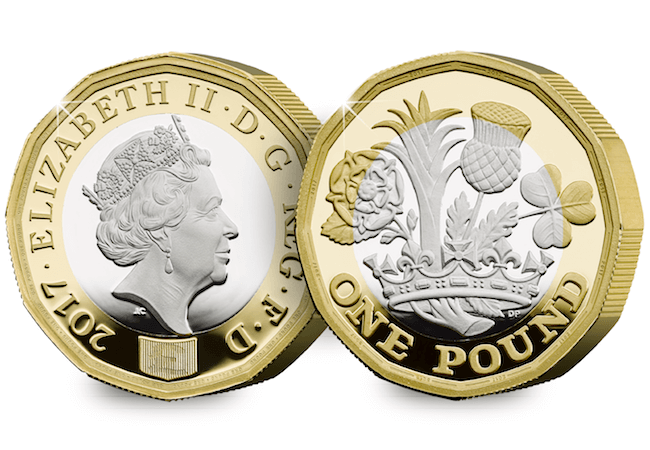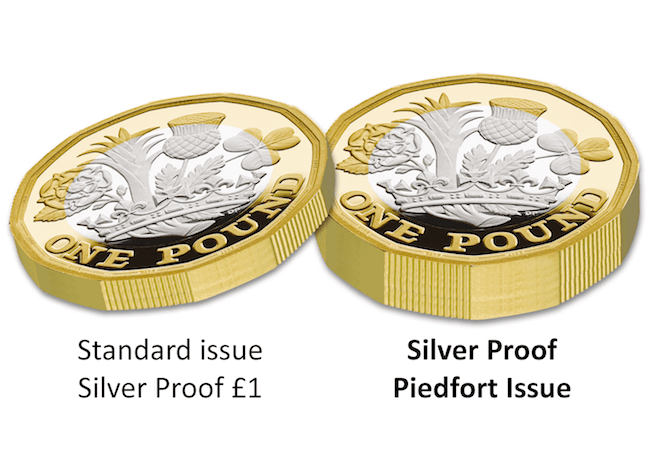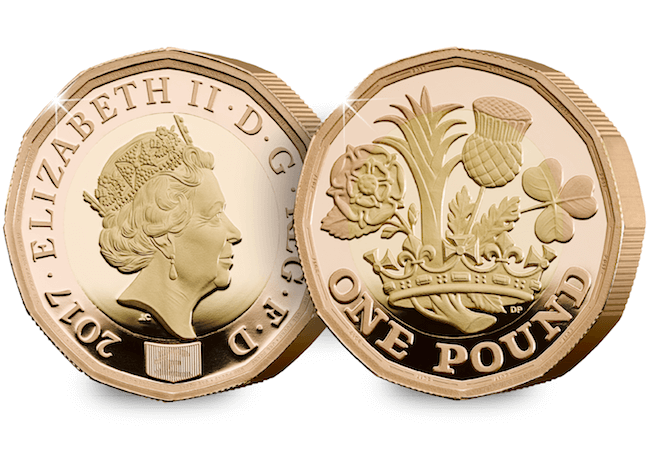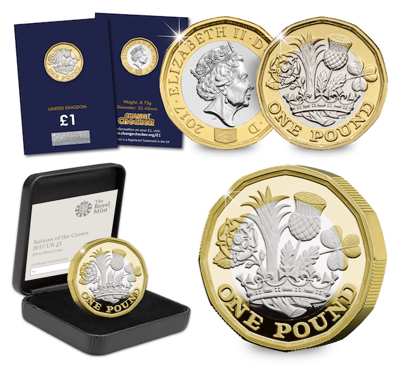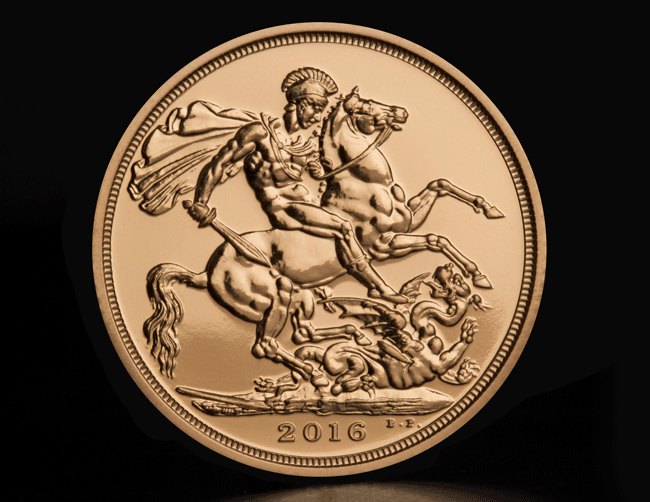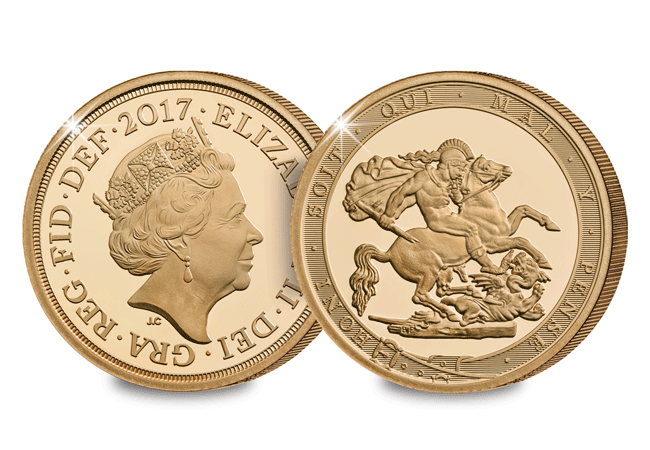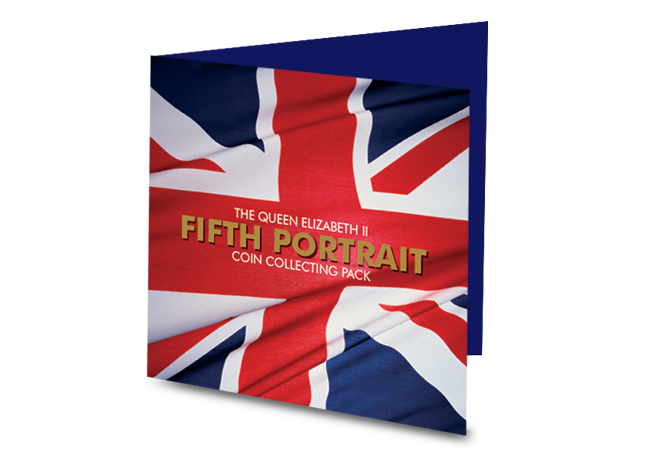Posts Tagged ‘British Coins’
All you need to know about the new 12-sided £1 Coin Collector Editions
The Royal Mint have released 1.4 billion brand new £1 coins into circulation in what is the single biggest change to the UK’s coinage since decimalisation.
It is, of course, a much anticipated day for coin collectors keen to own one of the first coins. But with enough £1 coins entering circulation for everyone in the population to own more than £20’s worth, the standard circulation coin will be two a penny – well at least two a pound.
That’s why serious collectors are looking to mark this numismatic milestone with something a bit more special – one of the collector editions being released by The Royal Mint, several of which have edition limits that seem certain to sell out quickly.
Here’s your guide to the most collectable versions of the new 12-sided £1 coin.
Perfect Quality. Very Affordable.
Of course, quality is everything for coin collectors, which is why The Royal Mint is producing a collector quality base metal version of the new 12-sided £1 coin. Unlike the coins you’ll find in your change, these pieces have been specially struck and carefully handled to ensure that they remain free of the scratches and chips found amongst their circulating counterparts.
Known as Brilliant Uncirculated (BU), they are available for £9.99 in a Royal Mint Presentation Pack or £5.99 in a Change Checker Certified Brilliant Uncirculated Collector Card.
Silver Proof – the Collector’s Favourite
Perhaps the most important of the Collector Editions is the Silver Proof £1 Coin. Silver Proof coins have all of the qualities that collectors really desire.
- Precious metal content – struck from 925/1000 Sterling Silver with 24 Carat Gold-plate to create the outer ring.
- Strict Limited Edition – just 25,000 individual coins. That’s HALF the number of Silver Proof £1 Coins that were issued for the original Round £1 Coin in 1983.
- Perfect Proof Finish – even better than Brilliant Uncirculated, Proof coins are struck several times using specially polished dies to create a flawless finish with a perfect mirrored background and frosted design. The ultimate in coin quality.
Double the thickness. More than five times as limited.
For silver collectors looking for something even more collectable, the double thickness Piedfort edition is likely to be the first of the £1 sell-outs.
That’s because collectors not only own a rare double-thickness new £1 coin but there are just 4,5000 of them – less than five times the maximum mintage for the standard £1 silver proof.
The Gold Standard
For the ultimate limited edition, you can own the Gold Proof £1 Coin. Struck from 22 Carat Gold with a red gold outer ring, just 2,017 single coins have been authorised for issue.
Due to its very limited nature, we will contact you directly to discuss owning the Gold Proof £1 Coin if you are interested – please complete the form below.
Sign up here if you would like to be contacted about the Gold edition:
If you’re interested…
You can own one of the special Collector Edition 12-Sided £1 Coins today, click here to view the full range.
200 years of the Sovereign. Part III: Benedetto Pistrucci’s Timeless Design…
In my last post I explored one of the most monumental events in the history of British coinage, the Great Recoinage when the Master of the Mint decided to bring back the Sovereign as Britain’s new flagship gold coin. Now, I explore its truly timeless design created by Benedetto Pistrucci.
As designer of the original ‘modern’ Gold Sovereign, Benedetto Pistrucci’s name has become synonymous with the coin. Born in Rome in 1783, Pistrucci took an interest in art from a young age and was trained by two of the leading engravers of the time.
But his fate was not in Rome. He moved to Paris in 1814 and then to London the following year.
And it was here that he really made a name for himself.
Pistrucci became a successful and wealthy cameo designer and maker and in 1815 he met William Wellesley Pole, the Master of the Mint, who admired his work. Pole was barred from appointing a foreigner to a crown office but when the Chief Engraver of the Mint retired, Pistrucci succeeded him in all but title.
As part of the Great Recoinage, Pistrucci was tasked with designing the new Sovereign. It was essential for the design to be considerably different from the Guinea to avoid confusion between the two coins.
The timeless design
Pistrucci’s initial inspiration for the design derived from Lady Spencer, to whom he had been introduced to by the Master of the Mint, who showed him a wax model of St. George.
Pole agreed that the patron Saint of England would undoubtedly be a fitting choice for the design for the new flagship coin.
So, Pistrucci created his masterpiece using a waiter from a hotel in Leicester Square as his model.
His St. George and the Dragon design featured on all Sovereigns and Half Sovereigns from 1817 until 1825 with a modification in 1820 when Pistrucci exchanged St. George’s shattered lance for a short sword.
Pistrucci was removed from the mint in 1825 following in-house fighting and a dispute with the King over a portrait and his original St. George & the Dragon design began a 46 year exile.
But that was not the end of his beautiful design. It was revived nearly 50 years later in 1871…
Find out why in Part IV of our 200 years of the Sovereign Blog Series – click here to read it >>
Announcing the new UK Bicentenary Gold Proof Sovereign
To mark the Bicentenary of the “modern” Gold Sovereign in 2017, The Royal Mint have just released a brand new Gold Proof Sovereign reprising Benedetto Pistrucci’s original engraving from 1817.
With a low edition limit of just 10,500 worldwide, a special one-year-only design change and a fine proof finish, the 2017 Bicentenary Gold Sovereign has all the elements to be one of the most collectable British gold coins of the 21st century. And now you can own one.
Click here to secure yours today >>
Portraits of a Queen – which is Britain’s favourite?
With the new portrait of Queen Elizabeth II due to be revealed on Monday, I thought I’d revisit a blog I posted in 2013, which saw the 60th anniversary of the Queen on our coinage.
Back then you voted Mary Gillick’s 1953 portrait of the Queen the best, by a very slim margin. Will the new portrait become the nation’s favourite? Let’s take a look at the previous designs…
The first Queen Elizabeth II coins were struck in 1953 and since then four different effigies adorned our coins.

1953 – 1967: Mary Gillick
The first coins of Queen Elizabeth’s reign bore Mary Gillick’s portrait of the young Queen, engraved especially for the new coins.
Her uncrowned portrait of the Queen is still used on the Maundy Money distributed each year by Her Majesty.
With the upcoming decimilisation, it was decided to refresh the Queen’s portrait with Arnold Machin’s new sculpture of the Queen. Commissioned in 1964, it first appeared in 1968 on the new 5p and 10p coins. A version of the design with tiara was also introduced on stamps in 1967 and remains to this day.
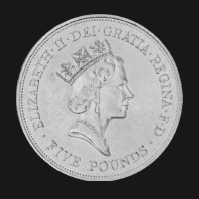
1985 – 1997: Raphael Maklouf
In creating his new effigy of Her Majesty, Raphael Maklouf aimed “to create a symbol, regal and ageless”.
His “couped” portrait depicts Queen Elizabeth II wearing the royal diadem favoured by her on the way to and from the State Opening of Parliament.
 1998 – current: Ian Rank-Broadley FRBS
1998 – current: Ian Rank-Broadley FRBS
The current Queen’s head on our coinage was designed in 1997 by Ian Rank-Broadley. Created to fill the full circle of the coin, its larger size was a deliberate response to the smaller 5p and 10p coins in circulation. A noticeably more mature portrayal of Her Majesty, Rank-Broadley aimed to show the Queen with “poise and bearing”.
If you’re interested…
Collect all 8 of the ‘new portrait’ coins when you find them in your change with The Queen’s New Portrait Coin Collecting Pack. Available now for just £3.99 (+p&p).

